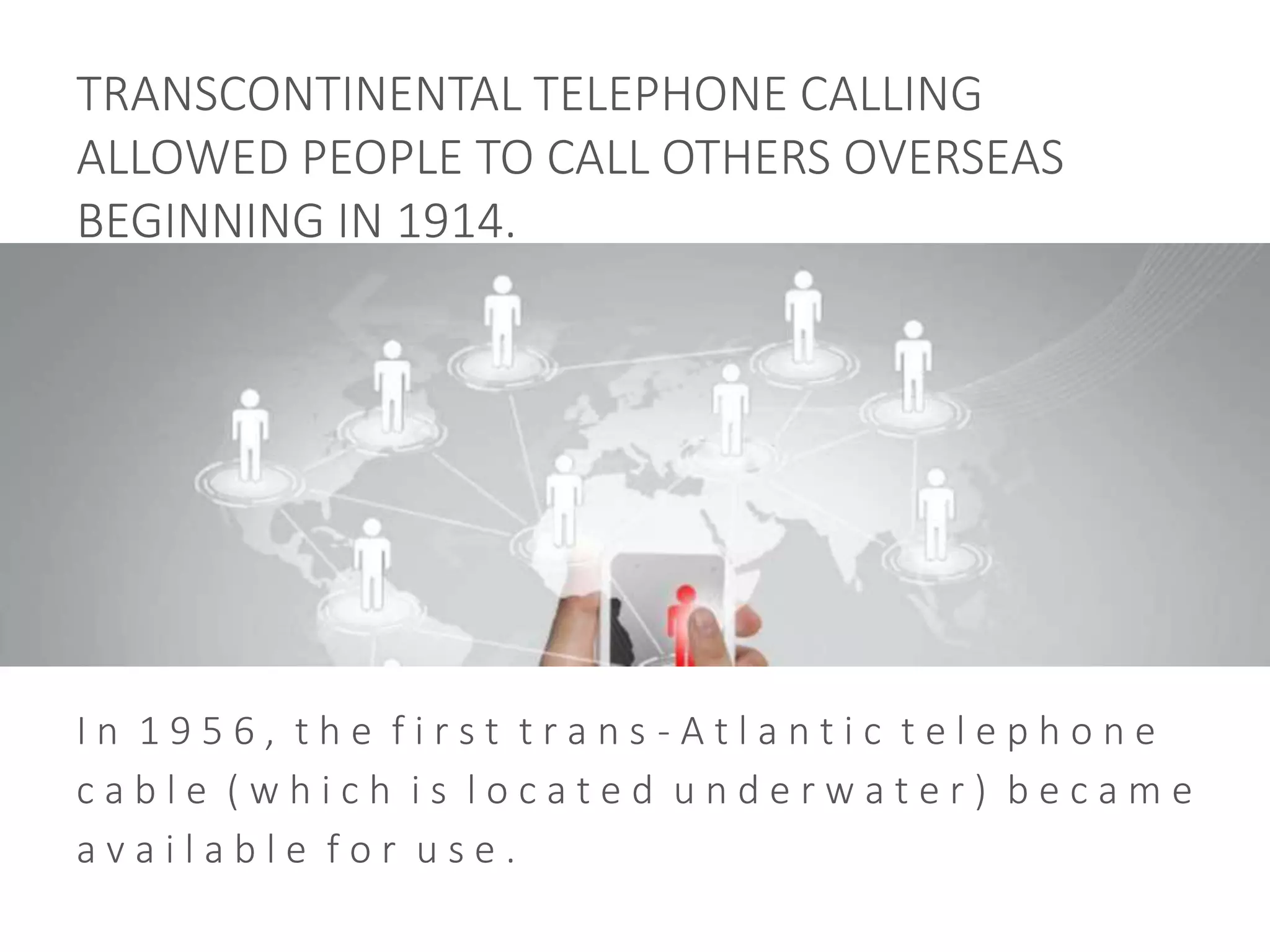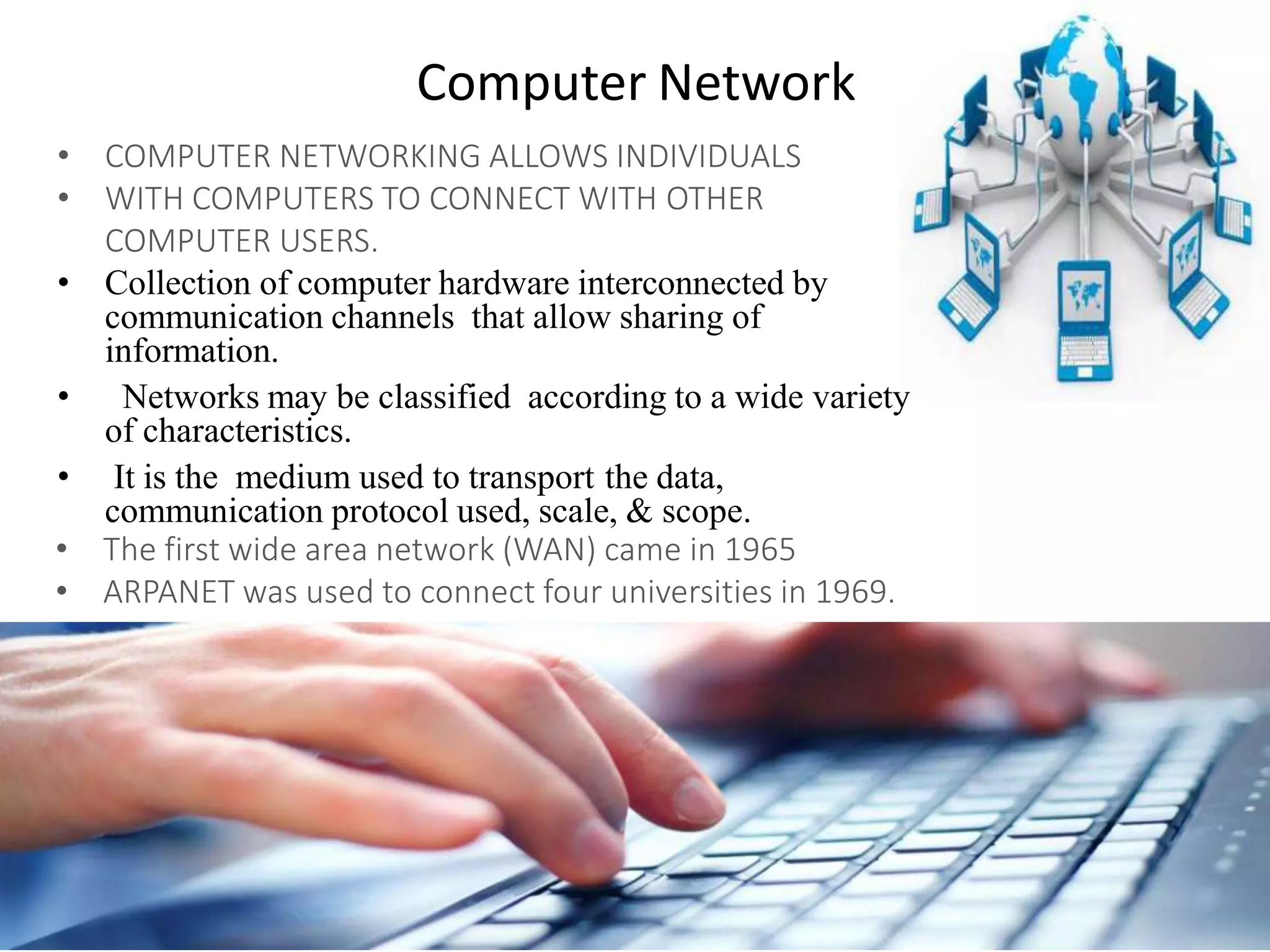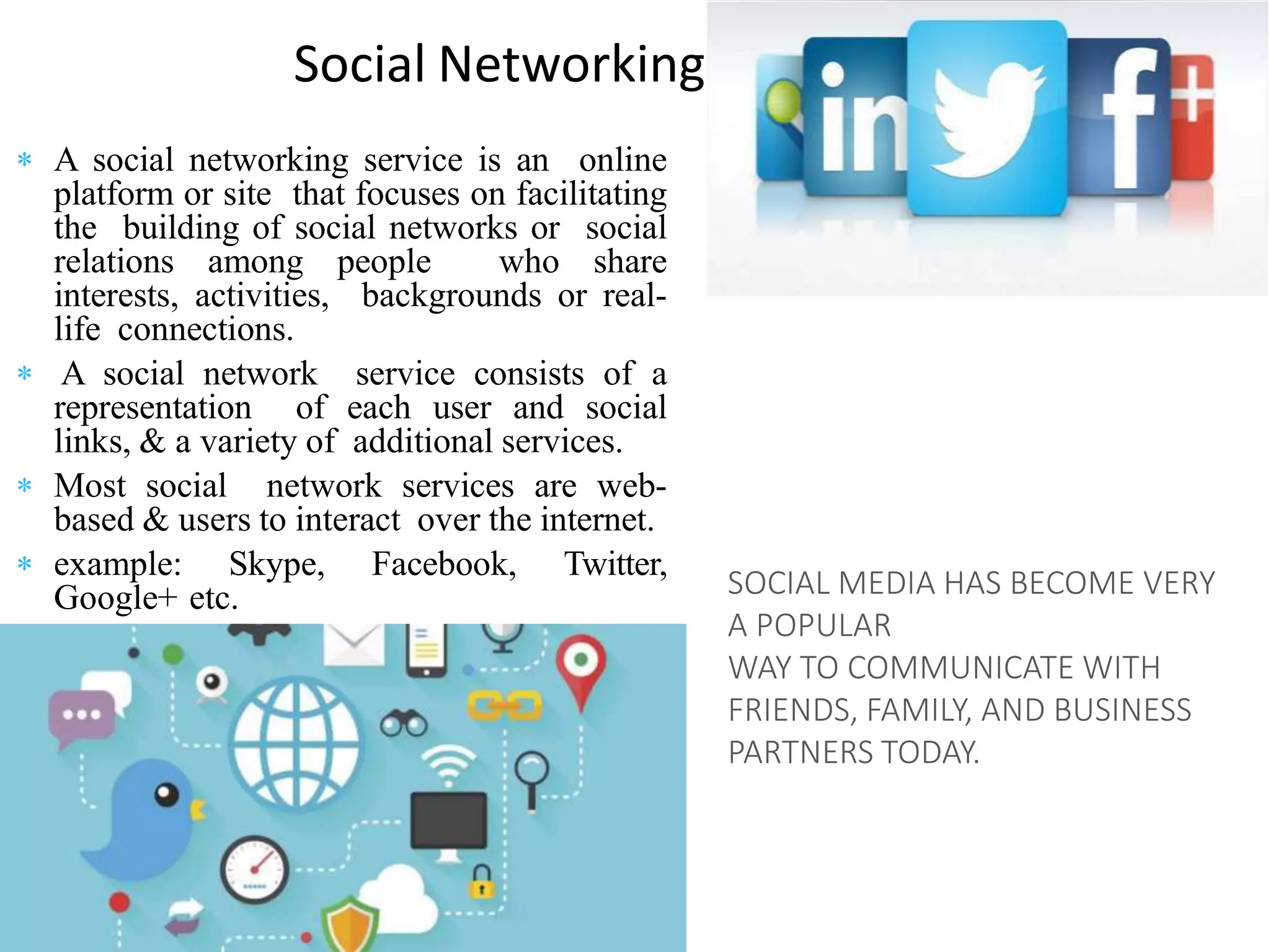The document outlines the evolution of human communication, starting from primitive methods like smoke signals and horns to modern technologies such as the internet and social media. It highlights key advancements, including the development of the telegraph, telephone, and mobile technology, which have transformed communication across distances and facilitated instant connection. The conclusion emphasizes the profound impact of these advancements on business efficiency, social interaction, and global relationships.























